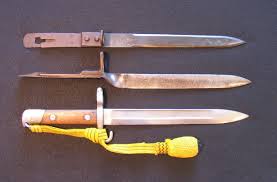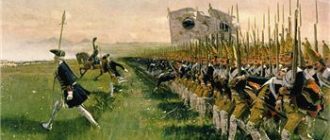The Austrians are credited for setting the bench mark when it comes to bayonets. Find out what makes their bayonets the top of the line military tool and how they have evolved over the years.
The Austrians are credited with producing some of the most effective war tools and weaponry during the First World War. This is because the country was at the heart of the war and there was a dire need to innovate such items. Amongst the many different battle-gears that the Austrians produced during its warring days is the bayonet. The Austrians constructed extremely effective and practical bayonets that could be used in a number of different applications. Their bayonets were so artistically engineered that they are considered as the bench mark for bayonets even today.
Different bayonets from different times
Their dual purpose bayonets have captured the imagination of armies all around the world. They had a bayonet that could either be used for what it was and it could even be used as a sword. Hence you could make use of it as per the demand of the situation. This particular style of bayonet came into existence during the 1850’s. It was specifically manufactured for the carbine and the short rifle but it could not be used with a full length musket. These bayonets were widely used during the American civil war. They actually came in very handy during those times when the Europeans ran short of their surplus arms and had no alternative but to use the bayonet. This particular version of the bayonet had a leather covered wood scabbard and sheet steel mounts.
There have been further variations on the bayonet such as the Augustin Jager Carbine Sword Socket Bayonet. Although this one was designed round about the same time as the above mentioned bayonet and has the similar functions it had the added feature of a Lorenz helica mortise slot. The Austrians also designed a bayonet for the first rifle that used a nipple system. This particular rifle was considered to be a short rifle but in terms of accuracy and effectiveness it provided better results than much of the bigger rifles of its time. The use of this weapon was common amongst the confederate troops during the American civil war and the Union. Their trade mark is the diagonal mortise slot in the socket plus the four edged blade with a width that is greater than its height.
The shortened version of the 1867 model has received much more world wide recognition than its predecessors. With a steel cross guard to protect your hands and pressed leather grips they offered the user utmost convenience and protection. Furthermore it has a hooked blade breaker quillon and a muzzle ring that served as the musket site. The single edged re-curved blades were known to be very effective in different applications. This newer version of the bayonet replaced the previous sword bayonet and was itself replaced by the shorter version of the Sword Bayonet. Later on the Austrians developed highly versatile bayonets that could be mounted on top of a number of different Austrian rifles. These were basically low budget bayonets which were used as replacements to the originals that may have been lost or broken during action.





